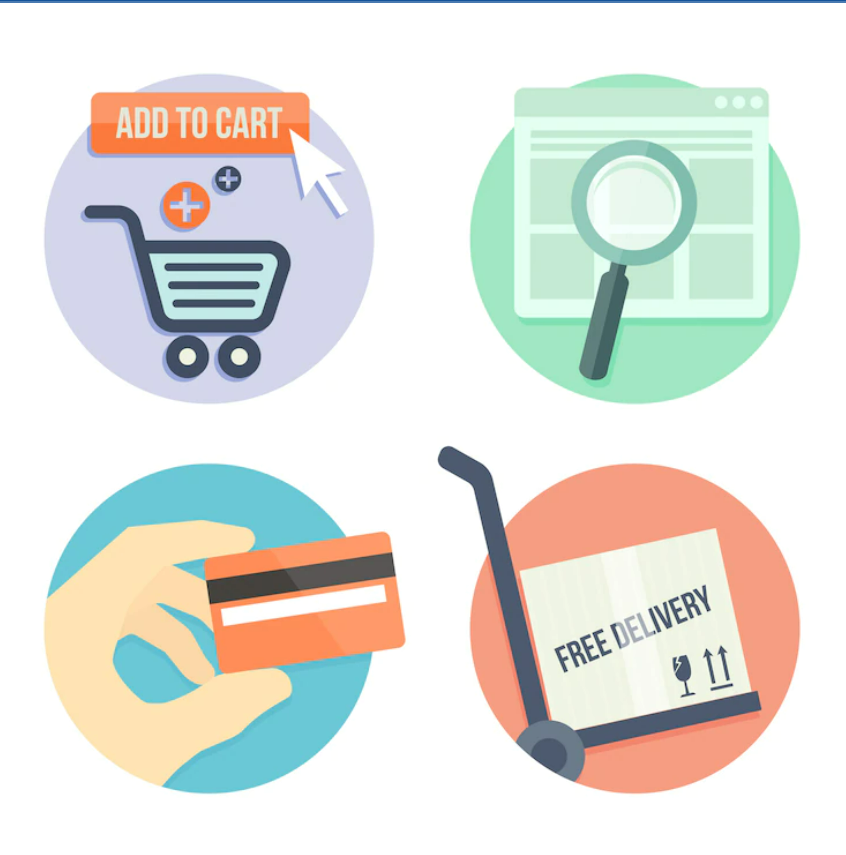5 Ways to Grow D2C Brands in India

India’s retail landscape has changed significantly as a result of the pandemic. Retailers have seen a record-breaking digital sales as a result of the country wide lockdown as well as social distancing measures. Customers now expect secure, contactless doorstep deliveries.
Over the same period of time, the D2C businesses grew at a rapid pace. In a variety of categories, such as (FMCG) Fast Moving Consumer Goods, Fashion, Cosmetics, and also Furniture, there has been an explosion of niche D2C brands.
Without even a wonder, the internet’s rapid spread has had a significant impact on everyone. Consumers are now easier to reach than ever before. Furthermore, the direct-to-consumer (D2C) strategy allows businesses to interact directly with the target customers, eliminating the need for middlemen.
Moreover, as per a recent report, by 2020, the e-commerce sales would then contribute for 18% of the global retail market. This percentage is expected to go up to 21.8 percent by 2024. So, if you’ve ever considered starting a direct-to-consumer company, now is the time.
How does the D2C Business Work?

D2C brands operate under the simple premise of eliminating intermediary from supply chain. In a traditional supply chain, the supplier, manufacturer, distributor, retailer, and wholesaler are all involved. Long-term negotiations are common in such a business model at each and every phase of product delivery. It also results in long lead times for product launches and a never-ending cycle of feedback from customers.
Whenever it comes to grow D2C business, the model ignores the traditional supply chain’s established standards. The D2C brand advocates for eliminating all unneeded resellers and wholesalers in favour of direct contact with customers. To accomplish direct connection with end-consumers, the D2C model utilised advanced technologies like cloud and eCommerce business.
Let’s take a look at five essential tips to start and grow D2C business and selling your products online in this regard.
Tips to Grow D2C Business
1. Competing Against Well-Established Brands
Whenever a direct to consumer (D2C) brand arrives in the market, it does things a bit differently, but perhaps the most significant element is competing against well- established brands which have been around for quite some time.
Offering memberships directly to the consumers, a model that established brands do not follow, contributes to the D2C brand’s unique platform. Consumers will benefit from convenience and cost savings when compared to purchasing products individually in stores. As a result, it’s an appealing proposition for launching a D2C brand.
Cutting out the extra steps of distribution and providing more personal service to a client base which has remained loyal to a particular brand for decades can change the consumer’s mind. The target marketing offers a significant benefit of subscriber D2C services as well as a social-media advantage to the target audience.
You might well be tempted to put your idea into action now that you have one. But hold on! Take some time to consider who your target customers will be. In order to address existing need gaps, you must first identify them and assess your market potential.
Assume your concept is brand new and no one has yet to market it. In this situation, it is critical to invest in raising awareness about your product/service concept before you begin selling.
2. Customer Experience as a Priority
The most effective way to build customer trust is to use their data effectively. Due to the lack of in-person interaction in traditional retail channels, D2C can seize the opportunity and work on it.
A fully data-driven customization strategy is the best way for a direct – to – consumer brand to stand out. The following can be expected while the brand is doing so:
Order value and sales potential were maximized.
LTV has increased.
Products that are suggested
Frequency of improvised repeat orders
Creating one-of-a-kind digital experiences
Customer service has improved.
3. Content Marketing and Brand Identity

It is not only necessary to launch a D2C brand, but it is also necessary to articulate the brand’s purpose. Beyond making money, what is your mission, and why should consumers purchase from you?
Building relationships with the potential customers requires a strong brand identity. And you can do so if you have a good understanding of your target audience. For a direct to consumer (D2C) brand with a small advertising budget and no reputation to begin with, content will be a crucial tool.
Content is frequently integrated into the marketing strategy as part of SEO strategy and aids in the recognition of a website. Content that earns trust, engages customers, and answers questions is great content.
By creating user-generated content and influencer assets, brands can just use their data to reach the audience and maximise budgets. A well-thought-out over-the-top advertising strategy can also help the company grow.
4. Influencers
For D2C businesses, to use the influencer market like a strategic tool is a fantastic choice. In the utter lack of in-person expertise and with no customers at all, the business requirement’s goal is rapid growth.
Influencers help direct-to-consumer brands gain popularity and come to their rescue. They are known for the product reviews and for helping to humanize an unfamiliar brand. The content individuals provide reaches their loyal followers almost immediately. The opinion matters is the content which influencers share. The use of influencers as part of a marketing strategy can increase consumer trust, leading to advocacy as well as protracted loyalty.
Businesses with limited resources can collaborate with nano as well as micro-influencers rather than larger personalities. They could be asked to get something they already do, such as making videos with their favourite online video editor, and rewarded with free items or money.
The use of influencer marketing is a cost-effective strategy. Higher engagement rates are achieved, which are in line with the D2C audience as well as brand positioning.
5. Adapting New Trends Quickly
Since the release of Covid-19, the use of online technology has exploded. Many customers are now completely comfortable with and reliant on digital means to make purchases. Consumers who prefer to discover new products in-store, on the other hand, are still a minority.
Constantly changing digital trends must always be given top priority. The most difficult challenge for a D2C company will be keeping up with changing trends and customer spending habits. To differentiate themselves in the market, businesses must focus on the huge data source gathered throughout the journey, which serves as the foundation for adapting and identifying consumer behaviour and providing a personalised experience.

Conclusion
In brief, these are all the determining factors to grow D2C brand and also its retailing. At the end of the day, as a D2C brand, your primary goal when you first launch is to delight the customers with innovative product offerings.
Check out the top D2C brands in India 2022.
The best way to implement D2C brands is to take a strategic approach which allows you to grow your market reputation and consumer base. Individualized interactive communication and directly answering customer questions is a great way to give your company a personal touch. Any online company can take a leap and become a market-leading brand with well-thought-out marketing techniques, the right software, and a clear roadmap.

